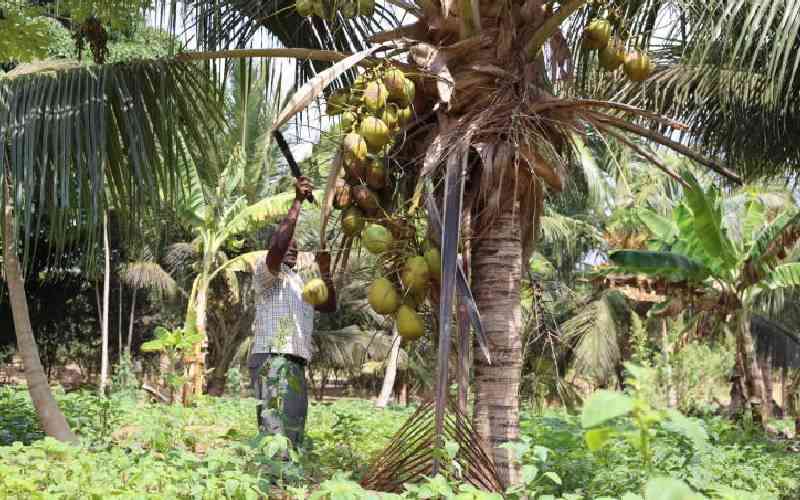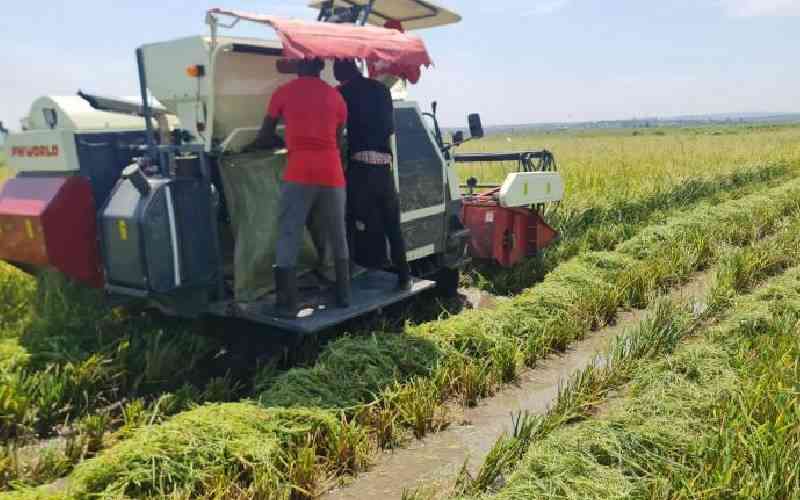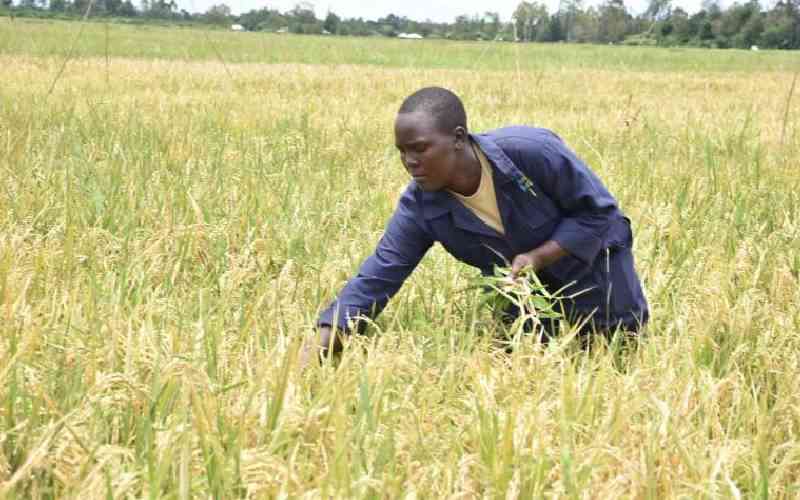With the harsh climatic conditions and lethal viral disease, maize farmers are being asked to embrace other produce.
One of the produce they are being encouraged to embrace is sweet potato because it is tolerant to drought and diseases and the yields are high.
Kilachi Manoa from Ngata estate in outskirts of Nakuru town, is among farmers practicing sweet potato production on his one acre plot.
Manoa, a former secondary teacher ventured into sweet production eight years ago. He began planting vines for traditional sweet potato varieties including those with red, brown and white coloured tubers.
“I love African culture that is why I decided to grow sweet potatoes,” says Manoa. Manoa has every reason to smile because a new high yielding sweet potato has been introduced.
Kenya Agricultural Livestock and Research Organisation (Karlo) launched Kenspot-1 variety in Njoro last year during the Rift Valley Institute of Science and Technology agribusiness demonstration.
“After keenly following the demonstration at the agribusiness, I developed the will on adapting the variety that saw me receive some vines freely. I planted in lines of 40 by 60 feet farm and surprisingly, I harvested 45 kilograms,” he says.
Karlo has selected Manoa to be a model farmer in the area where a training centre for Rongai Sub County will be established. The research institution is also encouraging farmers to form groups to practice value addition and make highly nutritious flour which fetches more money.
“Though I have been selling tubers to farmers locally at Sh2,000 per bag after every harvest, we have joined groups with guidance from Karlo. We plan to be suppliers of sweet potato flour,” says Manoa.
Karlo researcher Dr Laura Karanja, says the yellow fleshed variety that matures after six months of planting was released to the public and gazetted in 2013.
Research on the variety alongside Kenspot-2, 3, 4 and 5 began in 2006, after traditional varieties grown in most parts of the country including Kakamega, Embu, Mtwapa, Katumani and Nairobi among other parts was found to have low nutrients value, high infestation of pests and diseases and low production.
She says the institute produced the varieties using a molecular biotechnology tool to ensure they are free from viruses.
“440 different potato samples were collected from various potato growing areas but were found to be of low production with low nutrients,” says Karanja.
In 2007, a breeding block was established in Njoro and Marigat to breed varieties with high yields, high vitamin A, dry matter and tolerant to viral diseases.
Breeding was done in five different stages including observal trial of more than 1,000 samples in green houses, second stage that entailed preliminary yield trails and advanced yield trials where 30 samples were approved best.
Stay informed. Subscribe to our newsletter
The fifth stage entailed national performance trials that had around five sites in Njoro, Lare, Kabianga, Lanet and Bomet where the varieties were found to be of high quality.
“During fifth stage of research, an evaluation was conducted and found the new varieties were doing excellent in most parts of the country,” she states.
“In 2013, the viral tolerant varieties were introduced to the public and gazetted. If adopted by farmers, these varieties are alternative options in food security,” observes the researcher.
According to the researcher, production of the varieties ranges between 1,700 to 2,300 tonnes per hectare farm depending on the region and attitude.
Dr Karanja informs Smart Harvest that the crop is grown from slips (overgrown vines from mature sweet potato tubers). For easier germination, the sips are placed in a shade that contains moisture, placed in a bright, sunny window to allow roots to form before being planted in a well tilled land.
She adds that during planting, only those with developed roots are placed in an individual hall measuring 15cm deep spaced at 30cm to 45cm apart while allowing 3ft between rows.
Farmers are encouraged to plant the crop in ridges for easier root formation, weeding, harvesting and easier pest control.
 The Standard Group Plc is a
multi-media organization with investments in media platforms spanning newspaper
print operations, television, radio broadcasting, digital and online services. The
Standard Group is recognized as a leading multi-media house in Kenya with a key
influence in matters of national and international interest.
The Standard Group Plc is a
multi-media organization with investments in media platforms spanning newspaper
print operations, television, radio broadcasting, digital and online services. The
Standard Group is recognized as a leading multi-media house in Kenya with a key
influence in matters of national and international interest.
 The Standard Group Plc is a
multi-media organization with investments in media platforms spanning newspaper
print operations, television, radio broadcasting, digital and online services. The
Standard Group is recognized as a leading multi-media house in Kenya with a key
influence in matters of national and international interest.
The Standard Group Plc is a
multi-media organization with investments in media platforms spanning newspaper
print operations, television, radio broadcasting, digital and online services. The
Standard Group is recognized as a leading multi-media house in Kenya with a key
influence in matters of national and international interest.








